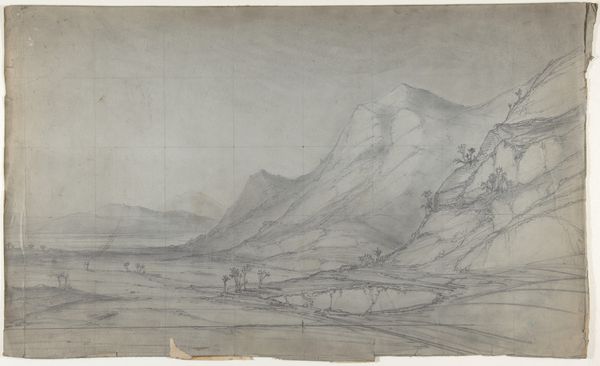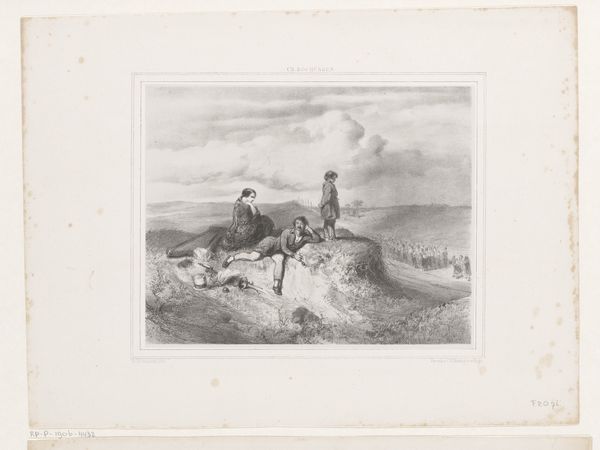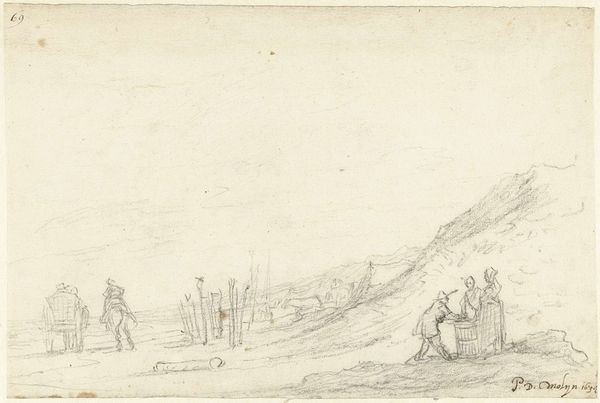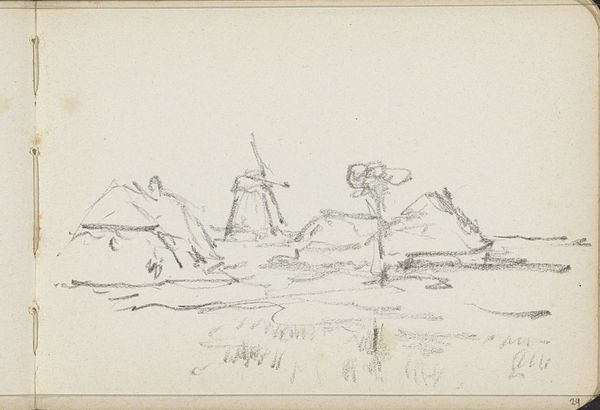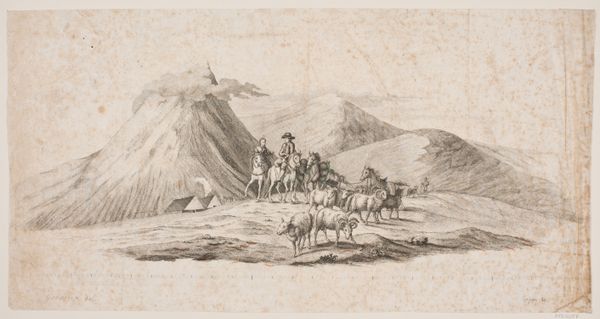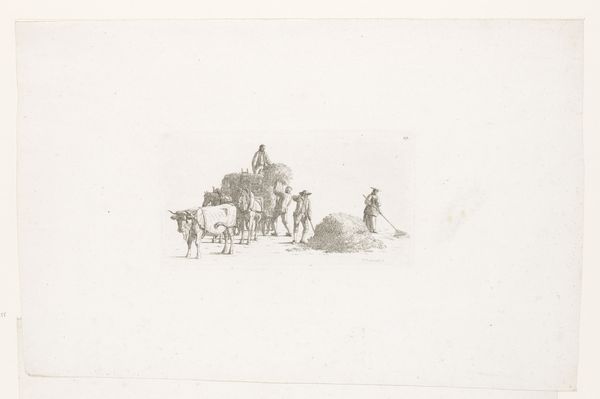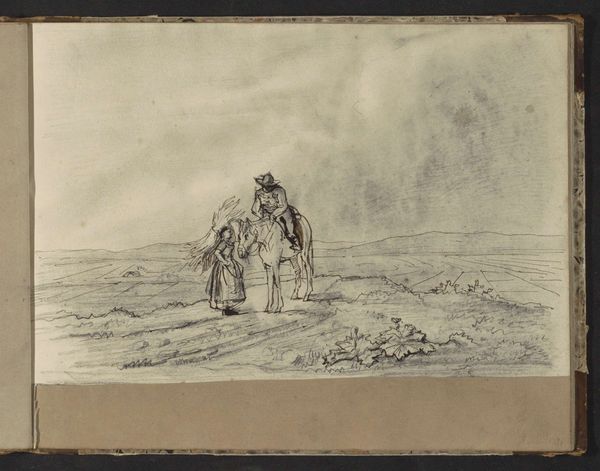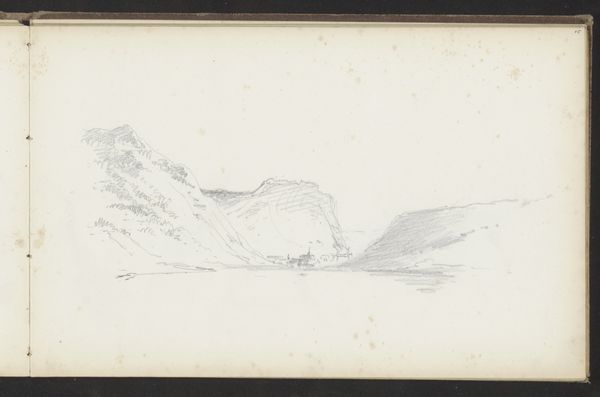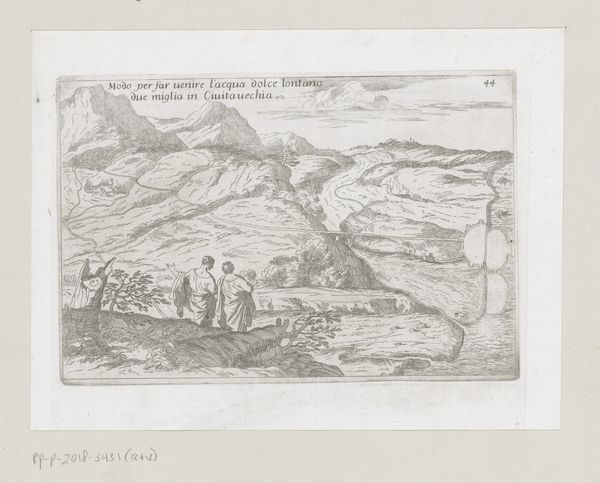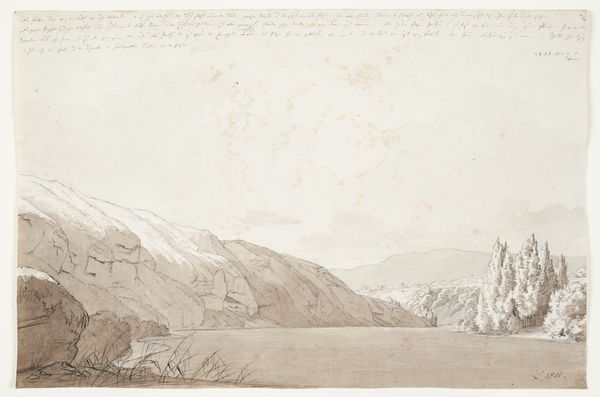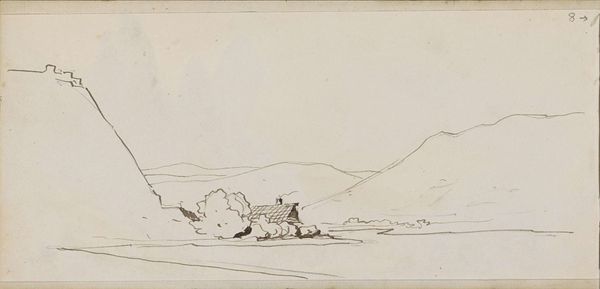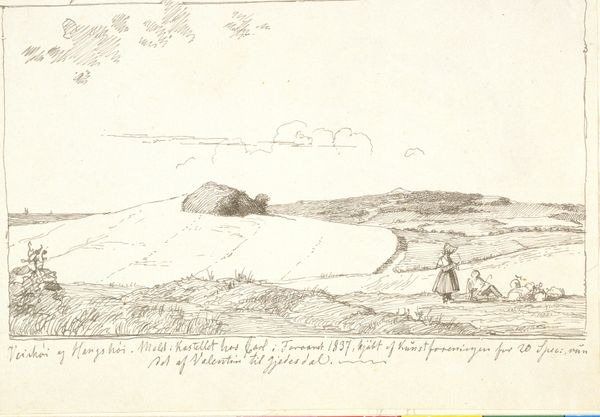
Dimensions: height 161 mm, width 221 mm
Copyright: Rijks Museum: Open Domain
Curator: Before us is a drawing attributed to Jurriaan Andriessen, dating probably from 1763 to 1767, titled "Gestrande walvis op Texel, 1763"—"Beached Whale on Texel, 1763". Executed in ink on paper, it resides in the Rijksmuseum's collection. Editor: There's a distinct air of melancholic curiosity about it. The muted tones and the vastness of the beached whale contrasted with the diminutive figures evoke a powerful sense of scale and our fleeting existence. Curator: Absolutely. It's fascinating to consider how such events became public spectacles, almost festivals. This stranded whale wasn't just a natural occurrence; it was a social phenomenon. News of the stranding on Texel would have drawn crowds, becoming a site of both scientific inquiry and popular entertainment. Editor: The whale itself, lying helpless on the shore, transforms into a potent symbol. It represents vulnerability, the limitations of even the largest and most powerful creatures against the forces of nature, or perhaps even against human exploitation. Curator: I agree. The artist places it in the tradition of history painting, albeit on a more humble scale, by documenting what was viewed as an important historical event. Drawings like these also had a vital role in spreading information. Before mass media, images like this provided a visual record of significant events, allowing people to 'see' what had happened, even if they couldn't travel to Texel. Editor: There’s almost a religious overtone. Doesn’t this helpless behemoth evoke Leviathan, or perhaps the story of Jonah and the whale, reminding viewers of human insignificance against divine forces? Curator: Indeed. The imagery of the beached whale can carry multiple meanings, shifting depending on the viewer’s background and cultural framework. Andriessen seems aware of these symbolic layers, presenting a scene ripe for contemplation on humanity’s place in the natural order. Editor: So it’s far more than a simple landscape piece; it really captured a moment in time where nature, society, and perhaps even spirituality, converged. Curator: Precisely. It underscores how seemingly straightforward images can be deeply intertwined with the social, cultural, and even political contexts of their time. Editor: I’ll certainly remember this drawing next time I'm feeling a bit too sure of my place in the world. Curator: It serves as a poignant reminder of the transience of all things, and the power of art to make us pause and reflect.
Comments
No comments
Be the first to comment and join the conversation on the ultimate creative platform.
